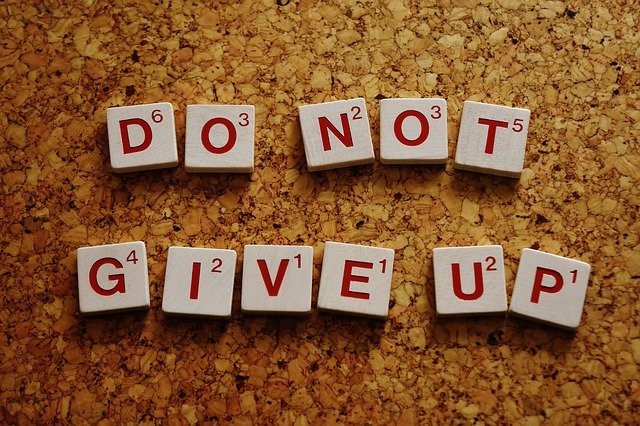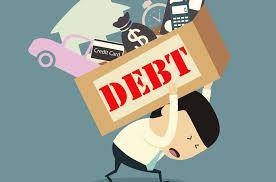The debt avalanche is a method based on a mathematical outcome. That particular outcome is to save you money in interest payments.
Even though it looks great on paper, paying off debt is an emotional journey. There is no denying that.
How often has stress or frustration with finding next months’ rent, kept you awake at night?
Are you choosing which debts to default on just so you can buy groceries?
In 2019, 34% of adults were stressed over the possibility of a surprise expense popping up.
Another 25% were worried they would not have all the everyday essentials they need. (American Psychological Association Survey)
I am currently using the debt avalanche on my journey and love it.
Nevertheless, there was a time during my journey when I would not have been able to commit to this method emotionally.
Look to see if this method is right for your current situation.
If not, I have another suggestion at the end to help you work up to the debt avalanche method.
Let’s do this!

What is the Debt Avalanche Method
The debt avalanche method is similar to the debt snowball.
Instead of paying off debt from smallest amount to the largest amount, you pay off the highest interest rate to the lowest interest rate.
For this process, you ignore the total amount you owe on your debts and zero in on the interest rates instead.
While you are paying off your debt with the highest interest rate, you will pay the minimum balances on the rest of your debts.
Just like the debt snowball, once your first debt is paid off you apply the funds you just freed up to the next debt.
You gain momentum by increasing your monthly payments toward the debt you are currently focused on paying off.

Why the Debt Avalanche Works
The reason this method is so popular is mainly because you save the most money during your debt pay off journey.
Mathematically this is the cheapest method for debt payoff.
By paying off balances with the high interest first, you are decreasing the total cost of interest your debts will accrue over time.
That means most of your payments are applied to the balance you actually owe rather than interest and fees.
You will also prevent high interest rates from increasing the monthly minimum payments on some of your debt or maxing out a credit card line.
When you look at the big picture, you will actually spend less time paying off all your debt with this method.

How Does a Debt Avalanche Work
5 Easy Steps to Build Your Own Debt Avalanche:
- Create a complete list of your debt. Include the total debt amount, interest rate, and monthly minimum payment.
- Put your debt in order from highest interest rate to the lowest interest rate.
- Pay the minimums on all debt except the one with the highest interest rate
- Pay more than the minimum payment on the debt you are trying to pay off completely. Only pay what you can afford.
- Once the first debt is paid in full, repeat steps 1-4.
Note: add the monthly payment you just freed up to the minimum payment of the next debt you are paying off.
This will increase your monthly payments and speed up your debt pay off journey.
Subscribe and you'll receive our weekly posts right in your inbox. You'll also be one of the first to be notified when our free budget course opens. Hope to see you there!
How to Debt Avalanche the Same Interest Rate
Since you are ignoring the actual amounts you owe, this method could become tricky when there are debts with the same interest rate.
When this issue happens, pay off the debt with the largest total amount owed first. This situation is the only time you will pay attention to the total amount you owe.
Keep in mind the concept of the debt avalanche is to pay the least amount in interest per month.
More Articles You May Be Interested In:
Credit Score vs Credit Report: Which One is the Most Important
Unemployed and Can’t Pay the Bills
How Does Credit Card Interest Work
How to Save Your Finances with the Debt Snowball
When to Use the Debt Avalanche Method
The debt avalanche method is not usually one you want to use at the very start of your debt pay off journey.
Below are some guidelines to consider when deciding if this method is right for you.
You can always change your debt pay off strategy at any time during your journey.
- You are caught up on bills and paying all of them on time each month
- Some smaller debts are paid in full already allowing you enough cash to comfortably live on for a long period.
- Budgeting is now a habit
- You can consistently commit to a debt pay off strategy
- You are ok with waiting a long time to see debt pay off wins
Regarding this last item, sometimes the highest interest rate debt is also the largest amount.
Let us say your first debt is $20,000 at 25% interest. This could take you 2 – 3 years to pay it off successfully.
Getting rid of debt for good is a very emotional journey.
Sometimes it is best to use a strategy like the debt snowball to help you see some progress in the beginning.
Once you are fully committed to paying off your debt, you will be able to stay focused on a large debt without needing consistent motivation.
I myself started with the debt snowball until all I had left were student loans.
Now I have switched to the debt avalanche.
This is helping my monthly student loan minimum payments decrease each year rather than increasing.
I also expect to be done paying off my student loans 5 years early with this method.
There is no perfect or one right way to pay off debt.
It is only perfect or right if it works for you.
More Articles You May Be Interested In:
Credit Score vs Credit Report: Which One is the Most Important
Unemployed and Can’t Pay the Bills
How Does Credit Card Interest Work
How to Save Your Finances with the Debt Snowball
Concluding Thoughts
If you are not sure if the debt avalanche is for you, follow the steps given above to create your debt payoff list.
Look at the debt you should start paying off first.
How much can you afford to pay toward that debt?
My student loans would have been the first to start paying on if I started with the debt avalanche.
That means I would have defaulted on my 45K of credit card debt because I couldn’t afford to pay both at that time.
In my situation, I wouldn’t have saved enough money using the debt avalanche method.
I also was not ok with defaulting on credit cards and destroying my credit score even more.
The final decision was to request forbearance on my student loans and debt snowball my credit card debt.
If you are in that same boat I recommend starting with the debt snowball until you free up enough money to make large payments toward your more expensive debts.
References
https://www.sofi.com/learn/content/debt-free-living/
Subscribe and you'll receive our weekly posts right in your inbox. You'll also be one of the first to be notified when our free budget course opens. Hope to see you there!





